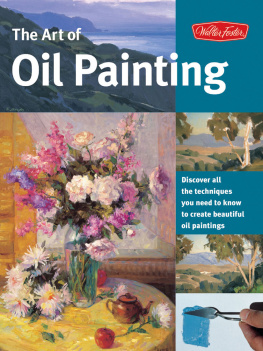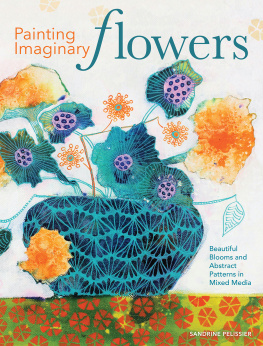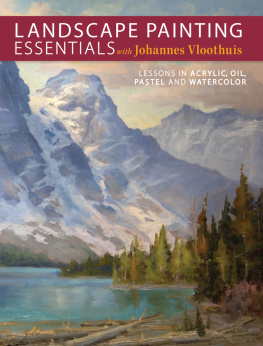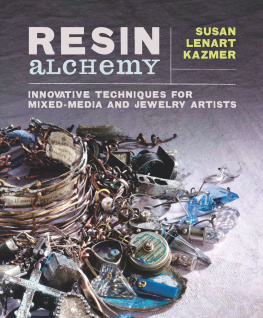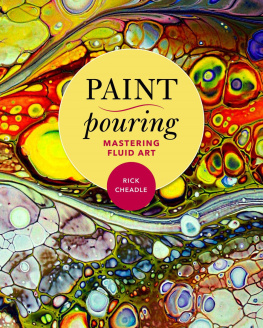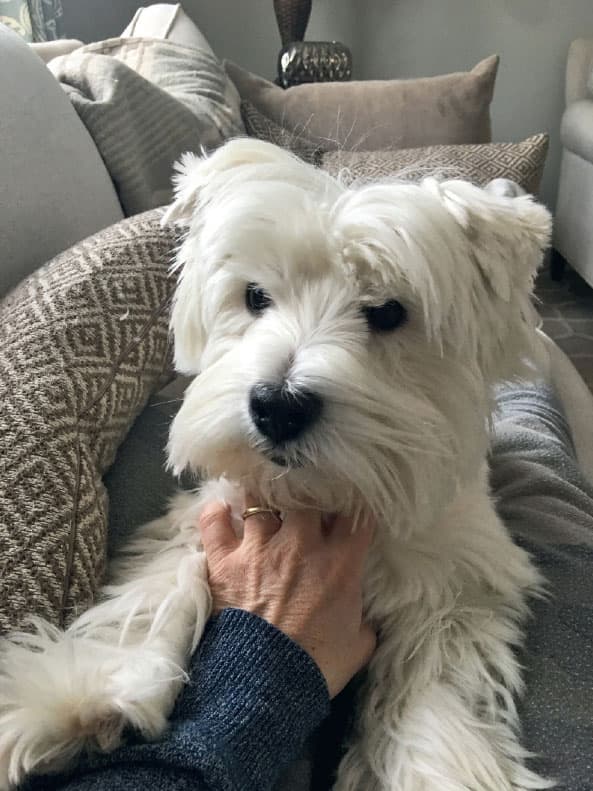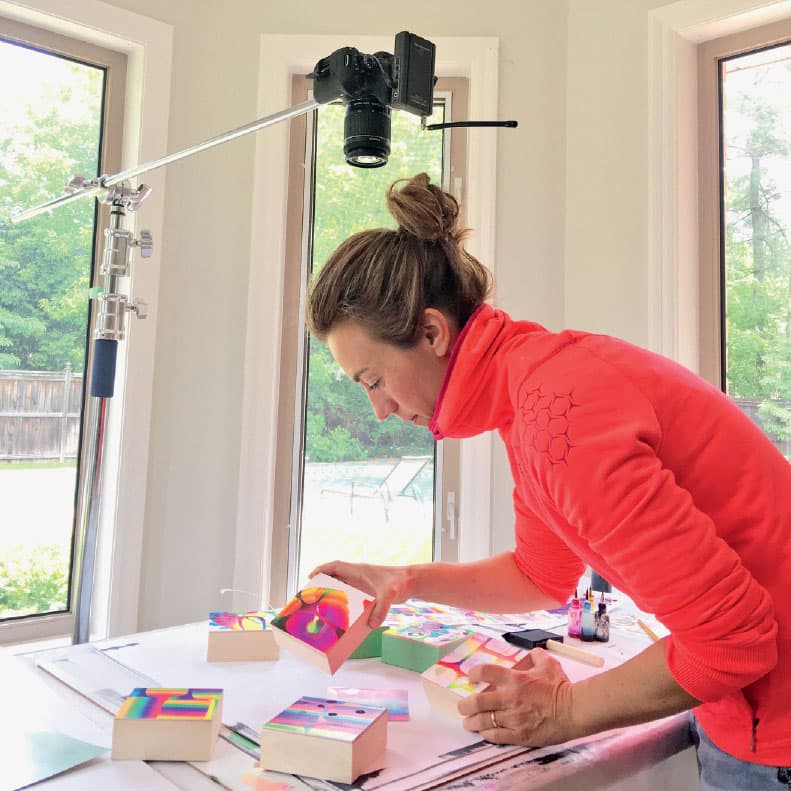ACKNOWLEDGMENTS
I always dreamed of becoming a published author, so when Mary Ann Hall, editorial director of Quarry Books, approached me to write one, I was floored. My initial thought was maybe she got me confused with someone else and had made a mistake. There are thousands of fabulous artists and creative minds in this world, and Im humbled and honored to be thought of as one of them. Thank you, Mary Ann, for believing in me and telling me I was THE artist. Thanks also to Marissa Giambrone, art manager and creative layout extraordinaire, who assured me several times that my photos looked great and produced a layout design beyond my expectations.
I wrote this book over the course of several snowy months seated on my couch by my front window alongside my dog Lucy. A few extra days were taken here and there at various ski hills during my sons freestyle competitions and again in miscellaneous airports, including Chicago, Aspen, Grand Junction, and Dallas, to name a few, while waiting patiently to arrive back home in Toronto.
I took hundreds of process photos for every single project in this book, which isnt always easy to do when working alone, especially with fluid art. Thank goodness for camera mounts and self timers! Although some professional photographers would probably shudder at the current state of my camera with its paint-stained body and sticky shutter release.
A high five and a big hug to my husband, Don, for turning a blind eye to my constant art mess and sometimes unrecognizable work studio, which is situated just off the kitchen in our home. Next dinner is on me. ;-)
To my loyal social media followers who support and love my work. My Instagram community is the foundation on which my online art journey began and Im certain how this book opportunity came to be. Thank you for buying it and continuing to make me feel that what I do matters.
Lastly, a word about artists in general. Art brings people together and the world would be a boring place without it. Those artists who share their creativity and knowledge freely for all to see are indeed generous, inspiring, and uplifting. And for that, we should all be truly grateful.
Have fun and stay creative!
Jane Monteith
ABOUT THE AUTHOR
Jane Monteith is a self-taught international-selling mixed-media artist and an online educator and influencer. While Jane was trained in advertising and marketing, she worked for more than a decade across Ontario as an independent artist designing and hand painting illustrations on vinyl substrates with highly pigmented screening inks. With her love of design and vibrant color combinations, she transitioned into working and creating her own art several years ago. Her work features colorful contemporary fluid patterns on birch wood panel, glazed with epoxy to result in a brilliant finish. Sharing her love of color, texture, and fluid art forms has gained Jane a large fan following on many social media platforms, including Instagram, Pinterest, and YouTube. Janes popular MOD Minis (a term she coined when she started creating fluid ink collage paintings on 4-inch [10 cm] wood panels) have been sold worldwide and sell out monthly on her website. Janes much larger original works are sold through KOYMAN Galleries, located in Ottawa, Ontario, Canada. She immigrated from England to Canada in 1981 and now lives just north of Toronto. For more on Jane, please visit:
www.instagram.com/janelovesdesign
www.janemonteith.com
www.youtube.com/janemonteith
www.janesclassroom.com
RESIN FAQ/TROUBLESHOOTING
There are many brands and types of resin on the market, each offering its own benefits. The type purchased (polyester, epoxy, polyurethane) will determine the cure time (time it takes to become solid) and working time (mixing and pouring).
It is important to use a resin that is made specifically for your needs. All the projects in this book use an epoxy resin. You will also want one that has low odor and zero VOCs (volatile organic compounds). Many brands of resin on the market, such as polyurethane, are intended for industrial use (e.g., fiberglass boats), are toxic, have strong chemical smells, and yellow quickly. Be sure to do your research before you buy.
For your safety, always work in a well-ventilated area, wear gloves, and wear a certified approved mask against airborne organic vapors.
Resins are made up of a two-part epoxy system (one part base and one part hardener). Depending on the brand, you will mix and measure either by weight or by volume.
There is a slight learning curve with resin, and everyone experiences this, no matter what type of resin is used. The most commonly asked questions, issues, remedies, and preventive steps are outlined here to help you problem solve.
NOTE
Art Resin was used for all projects throughout this book. All popular resin brand websites are listed at the top of the Resource Guide.
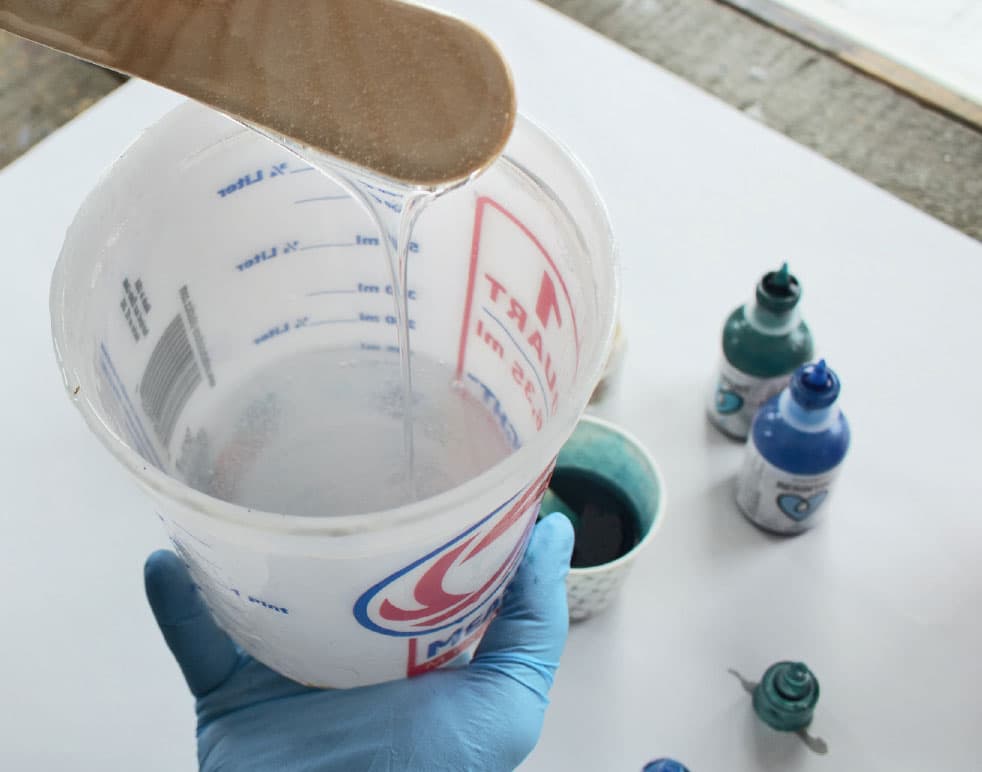
ISSUE | CAUSES | REMEDY |
Resin is not curing; still sticky/gooey | Improper measuring/mixing Too much colorant added (resin tint/alcohol ink) | Read and follow instructions accurately. Do not add more than 10 percent colorant/tint to resin mixture. Scrape off uncured resin. Wipe surface and recoat. |
Tiny bubbles cured in resin | Poured too thick a layer Didnt torch to release bubbles Didnt seal artwork prior to resin Mixed resin too quickly | Do not pour more than /" (3 mm) thick layers. Use a butane torch to help eliminate bubbles. Seal artwork first, especially raw wood. Slowly mix resin. |
Dents/dimples | Fluctuating temperatures Over-torching Dust particles | Work in a consistent temperature of 71F to 75F (22C to 24C). Do not hold or torch repeatedly over the same area of the resin. Move quickly and evenly across the surface. Cover artwork with a container while curing. |
Bare spots/repelled from sides | The surface area was oily | Handle artwork with gloves to prevent natural oils from hands from transferring onto the sides and surface. Sand with medium-grit paper and recoat. |
Resin appears cloudy | Water in resin | Even a few drops of water that make it into resin can cloud it. Keep away from water. |
Streaking/lines | Manipulating past working time Resin has begun to cure while still spreading | Pour mixture out of container all at once. Do not continue to scrape excess onto surface. Leave resin alone when working time has been reached. |
Oily cured surface | Film caused by amines in hardener while curing in cooler temperatures | Use a cloth and gently wash with warm water and dish soap. |
Scratches/minor imperfections |


